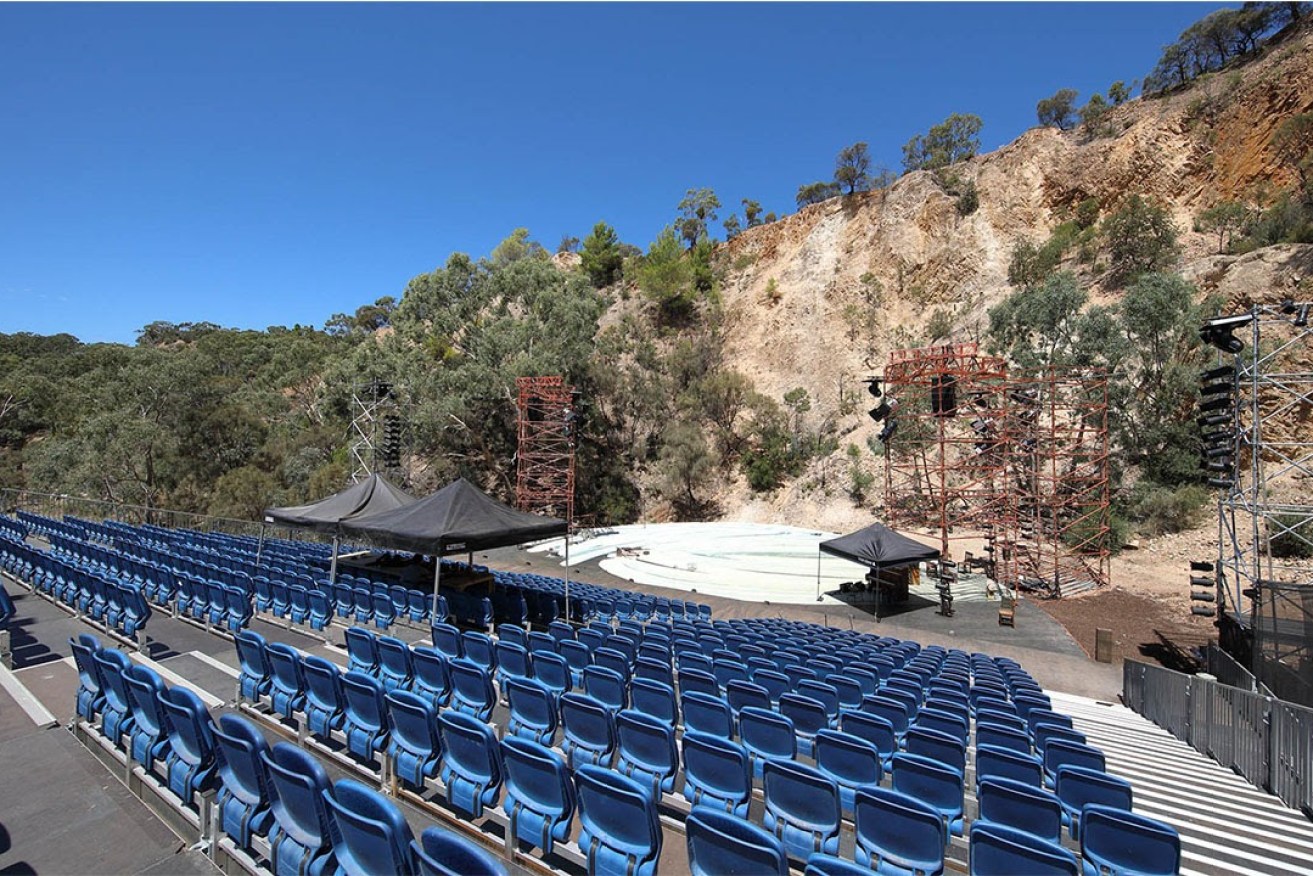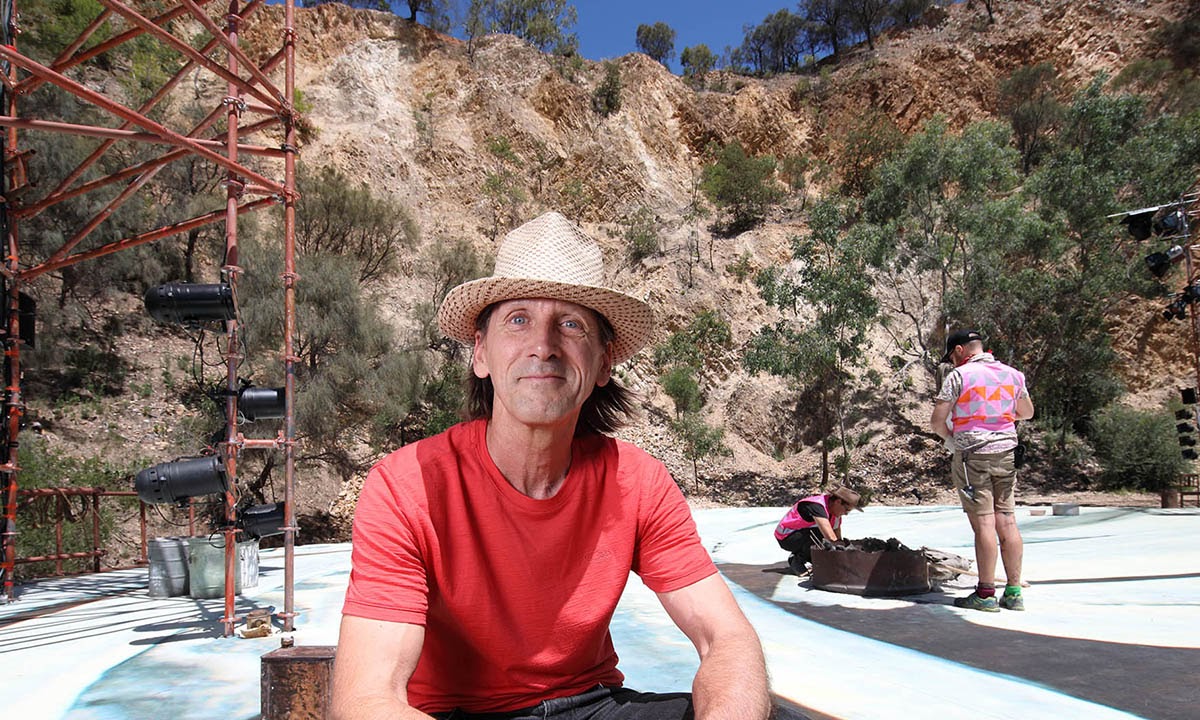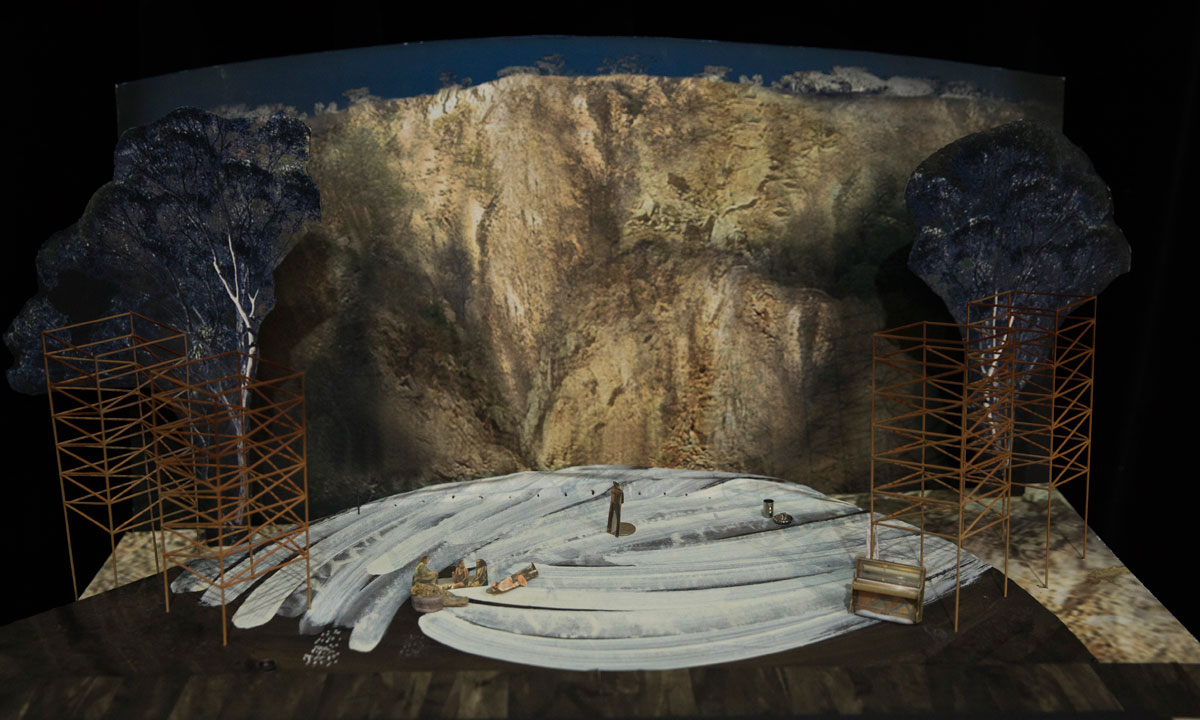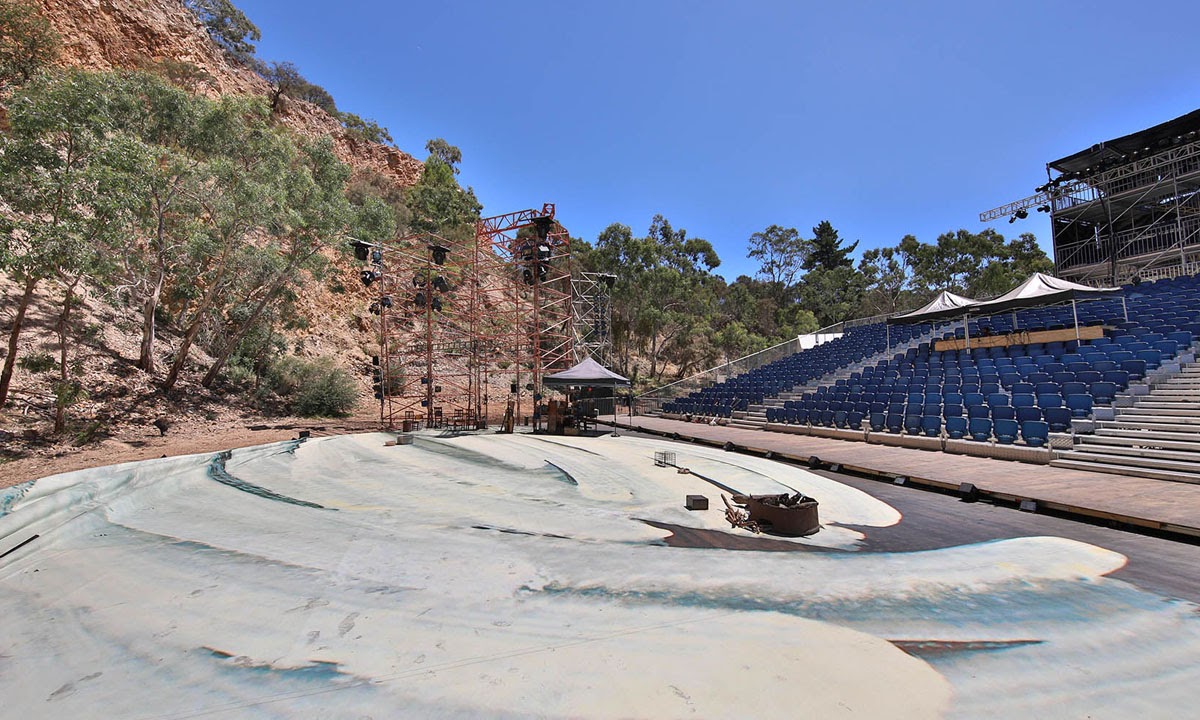Quarry’s raw beauty a perfect backdrop for The Secret River
Re-staging The Secret River under the stars in the Anstey Hill Quarry has not been without its challenges, but audiences are in for a special experience watching the show against the raw cliff backdrop.

The Secret River set under construction at the quarry this week. Photo: Tony Lewis
When designer Stephen Curtis first read Kate Grenville’s historic novel about the conflict between an Aboriginal family and an English settler family along the New South Wales Hawkesbury River, he felt he was reading about his own backyard.
He has lived along the river himself for many years, and says he can understand why Grenville’s convict settler character William Thornhill fell in love with the beautiful landscape.
Curtis’s connection with the area – in which Aboriginal rock engravings can still be found – helped shape his vision when he began designing the set for the original Sydney Theatre Company adaptation of The Secret River.
“One of the most instinctive responses I had when I started designing the production was that it needed to be really epic in scale,” he says.
“It needed to be magnificent in scale.”
In the multi-Helpmann-Award-winning production, directed by Adelaide Festival co-artistic director Neil Armfield, a representation of a towering gum tree created the “epic” backdrop on a theatre stage. At Anstey Hill, the sandstone cliffs will have equal, if not greater, impact.
“The cliffs here have a real rawness to them and that’s something that you can’t manufacture,” Curtis says. “It’s just a wonderful, surprising aspect.”

Designer Stephen Curtis on set. Photo: Tony Lewis
The Secret River, adapted for the stage by SA playwright Andrew Bovell, is one of the 2017 Adelaide Festival highlights and is being presented in association with the State Theatre Company of South Australia.
It is the first time the Anstey Hill Quarry in Tea Tree Gully has hosted a major theatrical production since director Peter Brooks’ marathon work The Mahabharata was presented at the 1988 Festival.
Curtis says the production team has been working on site for about a month, installing facilities such as dressing rooms, toilets and other facilities for the cast, crew and audience.
The raked stage is about 30m across by 20m deep, backing right up to the cliffs, with lighting provided from two 9m-high towers.
“It was a very successful production on stage and one that all of us who worked on it were very proud of – we felt we were able to tell what is a very beautiful story and do it justice in that production,” Curtis says.
“Audiences would leave every night deeply moved by what they had seen and experienced, so for Neil and I the challenge was could we translate that experience into a very different environment.”
Key to this was re-creating the intimacy of the original production. The performance space was scaled so it works in both wide shots and close-up; audience members in the front row will be close to the stage, while the back rows will be a similar distance from the stage as the stalls at Her Majesty’s Theatre.

A scale model of the set at the quarry. Photo: Shane Reid
The main set piece for the show is a campfire, which is used by both families.
Curtis says one of the strongest features of the design is the way in which action can naturally flow in and out of the space on stage, with considerable overlap between what the different groups are doing and seeing.
“That kind of double perspective is a key ingredient in the staging … I think one of the triumphs of Kate Grenville’s book is that we simultaneously empathise with both points of view.”
This illustrates his approach to design, which he says is not only about the look of the production, but also working with the director and cast to find ways to stage difficult scenes.

The stage and seating at Anstey Hill. Photo: Tony Lewis
One of the questions they faced with the stage adaptation was how to portray the scene where the white and Aboriginal boys play together in the river until sunset. Curtis says he and Armfield saw the scene as a pivotal one – how differently might things have turned out if the children had been allowed to continue playing and not pulled apart by their parents?
The designer showed the director photos of his own children “mucking around” in water, and they sought to achieve a similar effect. The raked stage was covered with a digitally printed vinyl floor cloth that became slippery when wet, so the young actors could throw water on it and go watersliding.
“We worked on the natural way that kids play and muck around together and improvise their entertainment.
“The audience kind of watch them discovering that action, making it up as they go along, so there’s a huge sense of spontaneous joy in watching them.”
For the outdoor production, the lighting towers helped overcome another challenge. In the absence of a theatre fly system, a hemp rope strung between the towers is used to hang a row of corn on the stage.
They towers also proved a handy place to locate speakers used for vocal reinforcement.
Curtis readily acknowledges that sites like the quarry create a lot of uncertainties – “they offer surprises that can become difficulties, but also surprises that become a real treat”.
One of those difficulties occurred after recent heavy rain, which turned the area into a quagmire. The earthmoving equipment preparing the site began sinking into the mud, and two days later when the sun came out it set like concrete. The production team had to source mulch to rebuild a more suitable surface in the quarry.
However, the natural beauty of the cliffs and the lighting changes which occur after dusk add to the impact of the production.
“One of the most profound experiences of doing the play outdoors is that we will watch it become darker and darker and darker as the story becomes darker and darker – and where the play gets to is deeply tragic,” Curtis says.
He adds that the walk from the carpark to the quarry set is also a delight and will put audiences in an ideal frame of mind to absorb the play: “They might spot a wallaby or a koala and there will certainly be evening birds around – so that’s a very special experience.”
Of course, there is always the risk that extreme weather could force the cancellation of performances.
“But we are all keeping our fingers crossed that the weather is kind to us because it’s a beautiful time of year in Adelaide and it’s a wonderful time to be out in the bush.”
The Secret River will be performed at The Quarry, Anstey Hill Recreation Park, Perseverance Road, Tea Tree Gully, from February 28 until March 19 as part of the Adelaide Festival.




